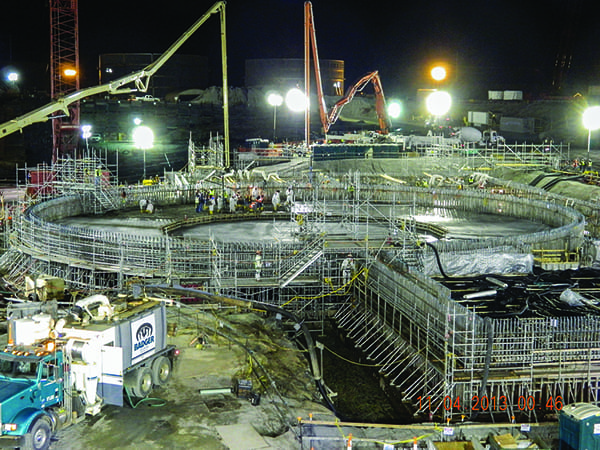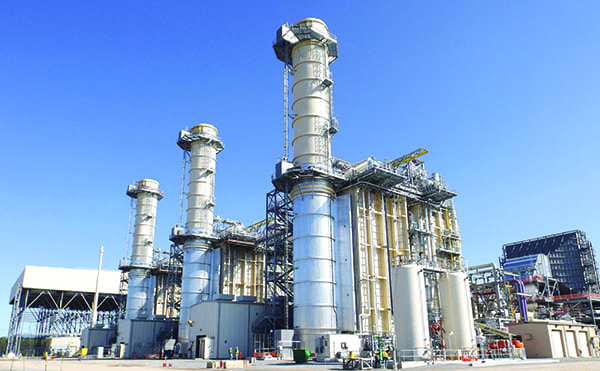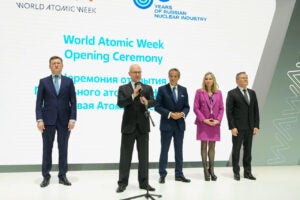Schedule delays and cost overruns can pose problems for complex power plant construction and retrofit projects. Sound planning, accurate modeling, and good communication can lead to successful projects for all stakeholders.
Power plant construction and retrofit projects are typically complex jobs. There are a lot of moving pieces and each milestone is intimately affected by prerequisite tasks. Good communication among design engineers, equipment suppliers, project managers, and owners is crucial to success. Each depends on the others to get the job done on time and on budget.
The process of building a new power plant or retrofitting an existing unit really begins long before a request for proposal (RFP) is issued. A great deal of work goes into evaluating regional power markets, growth rates, available resources, and regulatory requirements. Power companies track demand closely and monitor trends in the various locations they serve to gauge where and when new facilities are needed or upgrades are required.
Engineering, procurement, and construction (EPC) firms watch the metrics too. Understanding the market can give them a leg up on the competition and help them plan for future projects. Many EPCs try to develop close relationships with power companies to ensure they stay in-the-know on prospective projects that are within their field of expertise.
The Proposal Stage
Once a power company does decide that a new power plant or retrofit is necessary, it typically issues an RFP. That’s when the rubber hits the road and EPCs get to work. Project success starts with a good proposal, so most EPCs have a formal process in place to work through the details. Companies must evaluate the project scope, schedule, projected budget, technical requirements, labor and engineering resources available, commercial terms and conditions, and most importantly the risk.
Most EPCs can’t pursue every opportunity that comes through the door, so if a project is not a good fit, for whatever reason, companies can, and do, occasionally choose not to submit a bid. In a lot of cases, it’s a good business decision, because it does take time and resources to put a proposal together. If the company ultimately loses out to the competition, that effort is wasted and can’t be recouped.
Some EPC contractors have teams that prepare proposals and different teams that execute the project, but that can be a mistake. In such organizations, it’s very easy for the blame game to ensue, if things don’t go as planned.
“We try to use the same people as much as we possibly can,” said Tim Laughlin, senior vice president and project director for Sargent & Lundy. “We want the same people that developed the proposal to execute the project. Those people understand the scope and the unique issues associated with the project coming right out of the box and there’s no finger pointing. They can be held accountable more easily than if you have one set of individuals prepare a proposal, then they hand it off to a second set to execute.”
Ken Gerling, vice president of transmission projects within the Transmission and Distribution Group at Burns & McDonnell, also suggested that having the same people responsible for the project from beginning to end was a good idea. He told POWER, “One of the most important steps is to assign a project manager during the proposal process who will manage through project completion, if we are awarded the project. The project manager is responsible for our fee, schedule, and contract negotiations, and has total project ownership through the project execution phase.”
During the proposal stage, Sargent & Lundy prefers to work in a joint venture arrangement with partners. “We believe that that type of a teaming structure gives both parties the most incentive to pull in the same direction,” Laughlin said, suggesting that splitting up the scope in a consortium arrangement can result in some items falling through the cracks or lead to selfish interpretations of responsibility during project execution.
Another thing Laughlin felt is critical to project success is that Sargent & Lundy sends all major project proposals through a senior management review prior to submittal. The review covers the critical aspects of the proposal including the scope, project drivers, client priorities and evaluation criteria, strategy, pricing, and commercial terms. They also review the risks and the planned approach for managing those risks.
“I believe it’s very, very useful. There are a lot of smart people in the room with a lot of experience and you get quite a few good suggestions coming out based on their personal experiences or feelings about how to approach a particular risk,” Laughlin said.
All of the EPC contractors POWER spoke to suggested that understanding the driving forces behind a project and the customer’s priorities are critical to success. Concerning project partners, all agreed that a companies’ safety record, financial wellbeing, and past performance are major considerations.
Executing Successful Projects
A common mantra throughout the power industry is “Plan the work and work the plan.” There’s no place where that concept applies more than on construction and retrofit projects (Figure 1). Getting a team assembled quickly so a project can get off on the right foot is critical to success.
“One of the first things is making sure that you assign your critical resources to the project immediately. You don’t want to be limping along for a few weeks waiting for the right people to become available. You have to know through the process of bidding and negotiating that the project is coming and an idea of when it’s coming, and kind of clear the deck so that when you get that award, you’ve got the right people available to jump on it right away and get started,” Laughlin said.
It’s generally a good idea to get everyone on the same page right out of the gate. One way to do that is through kick-off meetings.
“An often-overlooked aspect is to have an alignment meeting with the client obviously, but also alignment meetings with key suppliers, subcontractors, and any other key players in the execution phase,” John W. George, vice president and managing director at Black & Veatch, told POWER.
The project scope, schedule interfaces, communication protocols, drafting procedures, goals, and other important aspects are usually detailed during such meetings.
According to Bruce Stephens, director—project execution with Fluor Corp., there are three things necessary for an effective project: Design, materials, and qualified craft personnel. “We want to make sure we are able to deliver all three,” Stephens said.
Stephens said that a typical combined cycle project always has three or four activity paths that are either critical or near-critical. The activities are the gas turbines, the heat recovery steam generators, the steam turbine, and piping often ends up being a critical or near-critical path activity. Fluor focuses on setting those jobs up as effectively as possible within the schedule, while allowing some schedule contingency for inevitable delays.
The rest of the non-critical path activities, such as the tanks and water treatment equipment that gets installed, and the administration and warehouse buildings, get worked into the schedule with an appreciation for minimizing craft density, which promotes safety on the site and leads to higher productivity.
“Occasionally, a vendor will have a piece of equipment done early, and they’ll send it to site. If there’s an opportunity to take a future activity and pull it into today, then we’re certainly going to do that,” Stephens said. Doing so provides additional schedule contingency, or float, that allows managers to more effectively levelize manpower.
“You have to make sure those contingencies are reasonable,” Laughlin said. “I’ve found that one way to do that is to make sure you’re looking at contingencies holistically—at the entire project scope. If you go in and put a contingency on every single project task, the sum is going to be much greater than the whole that’s required.”
The importance of good communication can’t be overemphasized. Communication can be facilitated through regular meetings, such as weekly internal project team meetings, daily plan-of-the-day meetings, and monthly project review meetings with the client, but timely ad hoc communication is also important.
“I hear very few complaints from clients about over communication,” Gerling said. “Cell phones, text messaging, email, instant messages, and Skype are excellent tools that have made communications much easier, but there is no substitute for regular face-to-face meetings as well as monthly management reports.”
Laughlin echoed the sentiment. “We have to have relationships where people are comfortable picking up the phone and asking a question. Or picking up the phone and saying ‘Hey, I’ve got an issue here, we need to agree on how we’re going to deal with it,’ ” he said.
What Is Success?
At the end of the day, all parties involved in a project want it to be successful (Figure 2). The contractors want to produce a quality product, while providing jobs for workers and a profit for their companies, and the client wants a plant that serves its needs. So, what makes for a successful project?
“Most people ask for the automation, ‘the formula,’ and they are disappointed it seems when the real differentiator on success and failure is the people, the leadership of them, the protection of them, and the plan. That stuff is not as glamorous to speak of, but there is nothing to replace it,” George said.
Laughlin pointed to two key things to gauge success. “One is the project needs to fulfill its purpose. It needs to work as advertised. It needs to be on budget and on schedule, but even more important than budget and schedule, the quality has to be there. The second thing is that all of the stakeholders individually need to feel successful,” he said. “We’ve got a saying around here, ‘A bad project for one person is a bad project for everybody,’ because the client may feel like they got a good project, but if the contractor lost a lot of money or if there’s bad feelings over something else, there’s going to be a trickle-down effect. For a project to really be successful, I think everybody that’s involved with that project has to feel individually that they were also successful.” ■
—Aaron Larson is POWER’s executive editor.












